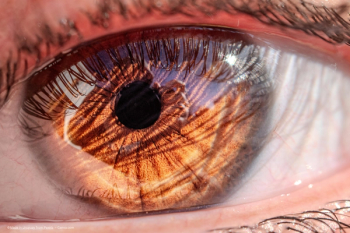
Detecting damage before it's too late
Understanding the glaucoma continuum enables earlier detection and better monitoring of the disease, according to Dr Theodore Krupin.
Key Points
The current definition of OAG is "a progressive optic neuropathy that is characterized by injury and death to retinal ganglion cells that results in loss of the axons and cupping that is detected in the optic nerve. These anatomic alterations cause vision loss as manifested on standard automated white-on-white visual fields." This highlights that OAG is a continuum, with glaucomatous structural damage proceeding psychophysical functional loss. While, most of the time, glaucoma is associated with an elevated IOP, IOP is really a risk factor for the disease and not the disease per se.
How important is IOP?
While OAG is technically a multifactorial optic neuropathy, in reality it is a progressive neurodegenerative disorder that not only involves the retinal neurones but also damages neurones within the brain. This notion is supported by Yücel and colleagues who demonstrated glaucomatous degeneration in the lateral geniculate nucleus and visual cortex of the brain.1
Monitoring visual field is not enough
In patients with elevated pressure, ocular hypertension or OAG with glaucomatous visual field loss, it is more important to evaluate the optic nerve and the retinal nerve fibre layer than to rely simply on standard automated visual field changes to monitor disease progression. This concept pays more attention to glaucomatous structural abnormalities using computerized scanning devices. The aim is to detect structural progression as a sign of inadequate glaucoma therapy before the recognition of progressive visual field damage. In the Ocular Hypertensive Study (OHTS), 18 (50%) of the 36 treated and 51 (57.3%) of the 89 non-treated (observation) patients progressed from ocular hypertension to glaucoma by optic nerve damage while retaining a normal visual field.2
This establishes the concept of the "glaucoma continuum", where the initial damage occurs with death of the retina ganglion cells by apoptosis, leading to loss of axons, optic nerve damage, and finally visual field loss. Optic nerve scanning devices permit earlier detection than observation alone and new selective psychophysical tests, such as short wavelength, automated perimetry (SWAP) and frequency-doubling technology (FDT), are able to detect visual field damage prior to standard automated white-in-white perimetry.
The ultimate aim of the continuum concept is to detect the the glaucomatous process earlier before the patient develops standard white-in-white field defects. This is because, by the time you detect a defect on standard automated perimetry, the patient already has moderate, not early, glaucoma.
References
1. Y.H. Yücel, et al.Prog. Retin. Eye Res. 2003;22:465–481.
2. M.A. Kass, et al.Arch. Ophthalmol. 2002;120:701–713.
Newsletter
Get the essential updates shaping the future of pharma manufacturing and compliance—subscribe today to Pharmaceutical Technology and never miss a breakthrough.












































